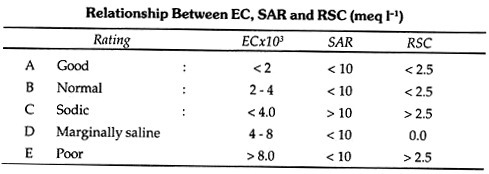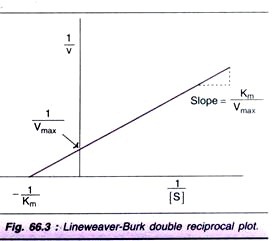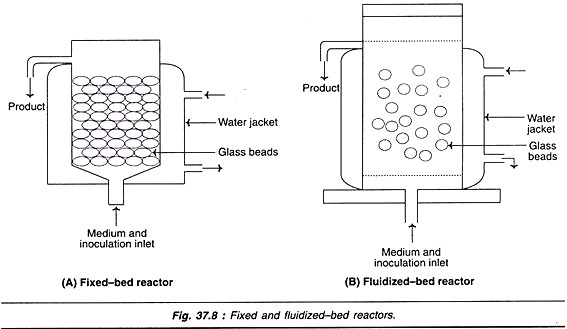ADVERTISEMENTS:
Bacterial Life Cycle or Bacterial Cell Cycle:
Bacterial life cycle mainly involves binary fission. In some cases budding and sporulation noticed.
But genetic recombination, so called sexual reproduction in bacteria is an occasional process.
ADVERTISEMENTS:
I. Binary fission (Fig. 11.6):
II. It is the most common method of asexual reproduction in bacteria under favorable conditions. Binary fission is the normal life cycle of a bacterial cell which involves: Replication phase (R-phase), Division phase (D-phase) and Interval phase (I-phase). The minimum duration of binary fission (generation time) in E. coli varies between 20 minutes to 1 hour. The duration of R+D phases is fixed, while I-phase is variable and can be reflected in any variation in the duration of life cycle.
The R-phase involves the duration to replicate the bacterial genome (i.e. the single compactly arranged circular DNA). The circular bacterial chromosome replicates bi-directionally from a specific site called origin. As the DNA replication is complete the new chromosome has an independent point of attachment to the membrane. ln E. coil the R-phase takes about 40 minutes.
The D-phase involves the segregation of daughter chromosome and other cellular components into daughter cells. During D-phase bacterial cell elongates due to the synthesis of new membrane and cell wall along the middle of the cell. Apart of growing plasma membrane and cell wall move centripetally to form a transverse septum.
ADVERTISEMENTS:
When the septum is complete the mother bacterium pinches into two daughter cells. The D-phase is initiated by the FtsZ proteins, which usually distributed uniformly; assemble in form of a ring (Z-ring) at the midpoint of the cell. The FtsZ protein is similar to tubulin- protein that forms contractile ring in eukaryotic cell division. Bacteria with mutant FtsZ gene fail to form septum and cannot divide.
I-phase is the gap between successive initiations of replication. During slow growth, duration of I-phase exceeds R+D and the replication is completed before cell division. During rapid growth, E. coli takes 20 minutes to complete its life cycle which is equivalent to D-phase. It means that I-phase duration reduced but R-phase is not omitted. Instead, during the ongoing eel! cycle the R-phase of advance cell cycle must be completed, so that each daughter cell inherits the already replicated chromosome of earlier cell cycle. As a result, each daughter cell has two nucleoids.
II. Sporulation:
Some bacteria develop asexual spores like endospores, arthrospores, sporangiospores, conidiospores etc. during unfavorable condition, i.e., at the end of log phase, mostly in the stationary phase.
(a) Endospore:
Endospores are highly resistant thick- walled, dormant cells develop intracellularly under unfavorable conditions. Usually a single endospore develops inside a bacterial cell. Hence endospores are considered as a means of perenation and dispersal, rather than reproduction. The position of endospore formation maybe central, subterminal or terminal. The endospore formers are mainly Gram+ rods like Bacillus, Clostridium, Desulfotomaculum, Sporolactobacillus and mycelial form like Thermoactinomycetes.
Endospores are highly resistant and can tolerate a temperature of 50°C to-100°G. This is due to thick impermeable wall, presence of anticoagulant dipicolinic acid, deficiency of P and K etc. Endospore formation begins with the formation of an axial filament due to coalesce of two nucleoids of a cell. A transverse septum without cell wall develop near one pole which separates a small cell called forespore containing a little cytoplasm and DNA from the mother cell.
The mother cell engulfs the forespore so that the forespore enclosed by two unit membranes. Around the foreshore, wall materials deposited to form endospore. The endospore released from the mother cell blown by air and on reaching a suitable medium germinates into a new bacterium (Fig. 11.7).
Structurally endospore is a highly dehydrated protoplast surrounded by a thick wall of 3-4 layers.
(b) Arthrospores:
The filamentous bodies of bacteria such as Nocardia, Actinomyces reproduce by fragmentation of filaments into small coccoid or bacillary cells called arthrospores, each of which give rise to new bacterium.
(c) Sporangiospores and Conidiospores:
ADVERTISEMENTS:
Streptomyces and Actinomyces produce spores singly or in chains by developing cross walls at the tips of branches. Each spore gives rise to a new bacterium. If the spores are contained in an enclosing sac (sporangium), they are termed as sporangiospores and if not they are termed as conidiospores or conidia.
(d) Zoospores (Gonidia or Swarm cells):
Only a few bacteria, such as Rhizobium, Azotobacter etc. resort to “oospore formation as a means of asexual reproduction. In this case the protoplast divides into many flagellated zoospores for rapid multiplication and dispersal.
(e) Cysts:
ADVERTISEMENTS:
In Azotobacter, thick-walled spores called cyst are formed. Like endospores, the cysts also germinate and form new bacterial cells.
III. Genetic recombination:
In bacteria, the sexual reproduction is primitive type where gamete formation, cell fusion and haploid-diploid alternation altogether absent. However, a donor bacterium transfers a small segment of DNA to the recipient bacterium to form a merozygote or recombinant. In a merozygote, a part of donor DNA replaces a part of recipient DNA to form a recombinant DNA. In the recombinant DNA, the donor DNA is called exogenote and the recipient DNA is called endogenote.
ADVERTISEMENTS:
This phenomenon of transfer of donor’s DNA to form recombinant DNA inside the recipient is called genetic recombination or meromixis. It brings variation in the bacterial population and contributes to evolution. The genetic recombination is an occasional but not obligatory process in a bacterial life cycle. There are three methods of genetic recombination in bacteria.
In order of their discovery they are:
(a) Transformation:
Transfer of donor DNA (exogenote) to recipient bacteria via environment. It is the only method of gene transfer that is mediated by bacterial chromosome.
(b) Conjugation:
Transferee donor DNA to recipient bacterium by cell-to-cell contact. It is mediated by plasmid.
ADVERTISEMENTS:
(c) Transduction:
Transfer of donor DNA to recipient bacterium by an abnormal bacteriophage (Intermediate carrier).
(a) Transformation:
It was the first method of bacterial gene transfer, which also established that DNA is the genetic material. Transformation was discovered by Griffith (1928) while experimenting on Streptococcus pneumonia, a Gram-positive bacterium. He came across two strains of S. pneumonia; Rough(R)-cells were a virulent (not causing disease) and smooth(S)-cells were virulent (causing disease).
Griffith observed that if a mouse was injected with live R-cells and heat-killed (dead) S-cells it would die within few days, and the blood sample of dead mouse would show the presence of live S-cells. In 1944, Avery, MacLeod and McCarty proved that the living R-cells (recipient) transferred into live S-cells by absorbing donor (dead S-cells) DNA from the medium (Fig. 11.9).
The transformation process involves 3 stages—Competence of recipient cells, DNA binding and uptake and integration. In S. pneumonia, a set of 12 genes synthesize and release 12 competence factors into the medium. These factors cause some changes in the cell wall so that are recipient cells come to a state of competence i.e. the ability of cells to take up DNA from the medium. This is called natural transformation where genes govern the development of competence. But, when any artificial treatments can induce competence in some bacteria, the phenomenon is called artificial transformation, e.g., in E. coli.
ADVERTISEMENTS:
In the second stage, a donor DNA binds with the cell wall receptor of recipient. One strand of the donor DNA will degrade by nuclease activity and the other strand enters the recipient cell. In the third stage, the single strand of donor DNA integrates into the recipient chromosome by a single strand replacement of recipient DNA.
(b) Conjugation:
In bacteria, conjugation involves transfer of DNA directly from a donor (male) cell to a recipient (female cell) by cell-to-cell contact. It was discovered by Lederberg and Tatum (1951) in Escherichia coli, a Gram negative bacterium of human colon.
In E coli, two types of mating strains exist i.e. F+ (fertility plus) strains contain F-plasmid and 1-4 sex-pili, always act as donors or males; while the F- (fertility minus) strains that lack F-plasmid and sex- pili, always act as recipients or females. The F-plasmid contain 13 genes for conjugation, out of which 9 genes responsible for the formation of sex-pili and the remaining genes needed for the transfer & replication i.e. replication of F-plasmid and its transfer. Bacterial conjugation takes place by two methods: the sterile male method and fertile male method (Figs.11.10 to11.11).
(i) Sterile male method:
In this method, conjugation occurs between a F+ cell and a F–cell. The F- plasmid replicate and transfer a copy of itself to the F- cell (recipient) through conjugation tube (sex pilus). As a result, the F- cell converts into a F+ cell (donor) and can in turn conjugate with other F-cell.
(ii) Fertile male method:
Here, conjugation occurs between Hfr (high frequency recombination) cell with F- cell. In Hfr cell (supermale or metamale), the F-plasmid integrates into the bacterial chromosome. During conjugation the F-cell (recipient) receives an incomplete F-plasmid and a few chromosomal genes from Hfr cell (donor). The transferred Hfr DNA segment cannot replicate. Instead, one or more of its regions frequently exchanged with the recipient’s chromosome.
As the conjugation tube stays for a while, the transfer of entire chromosome cannot be completed. This would otherwise require at least 100 minutes at 37°C to do so. The Hfr cell when revert into F+ cell, the F-plasmid withdraw from the bacterial chromosome. While doing so, the F-plasmid may bring some chromosomal genes along with it. As a result, an F prime (F’) plasmid formed. The conjugation is called sexduction or F- duction when the F+ cell (donor) transfers the chromosomal genes along with F’ plasmid to a recipient (F-).
In Gram-positive bacteria like Streptococcus faecalis, sex-pili do not play any role in conjugation. Rather, the plasmid-containing donor cells aggregate with plasmid-lacking recipient cells, and transfer of plasmids occur within these clumps.
(c) Transduction:
It was discovered by Zinder and Lederberg in Salmonella typhimurium (1952). The transfer of donor DNA from Donor cell to recipient by a defective bacteriophage is called as Transduction. Occasionally during the assembly of progeny bacteriophages ‘packaging errors’ may occur so that a phage particle may have a piece of host DNA with little or none of the phage DNA. Such a defective phage particle is called transducing particle. The transducing particles are of 3 types and accordingly 3 types of transduction exist.
(i) Generalized (Non- specialized) transduction:
In this case the transducing phage particle can transfer any segment of donor DNA to the recipient bacterium. For example, – phage P1 infecting E. coli, phage P22 infecting Salmonella, phage SPO 1 and phage PBS 1 infecting Bacillus subtilis (Fig. 11.13).
(ii) Specialized (Restricted) transduction:
Here, the transducing phage particle transfer a single DNA containing a few specific donor genes along with phage genes to a recipient bacterium. For example -phage lambda [a] infecting E coli.
(iii) Abortive Transduction:
Sometimes, the DNA brought by the phage does not integrate with the genome of the recipient bacterium and express itself independently. It does not replicate and so passes it only one of the daughter cells during fissions.








